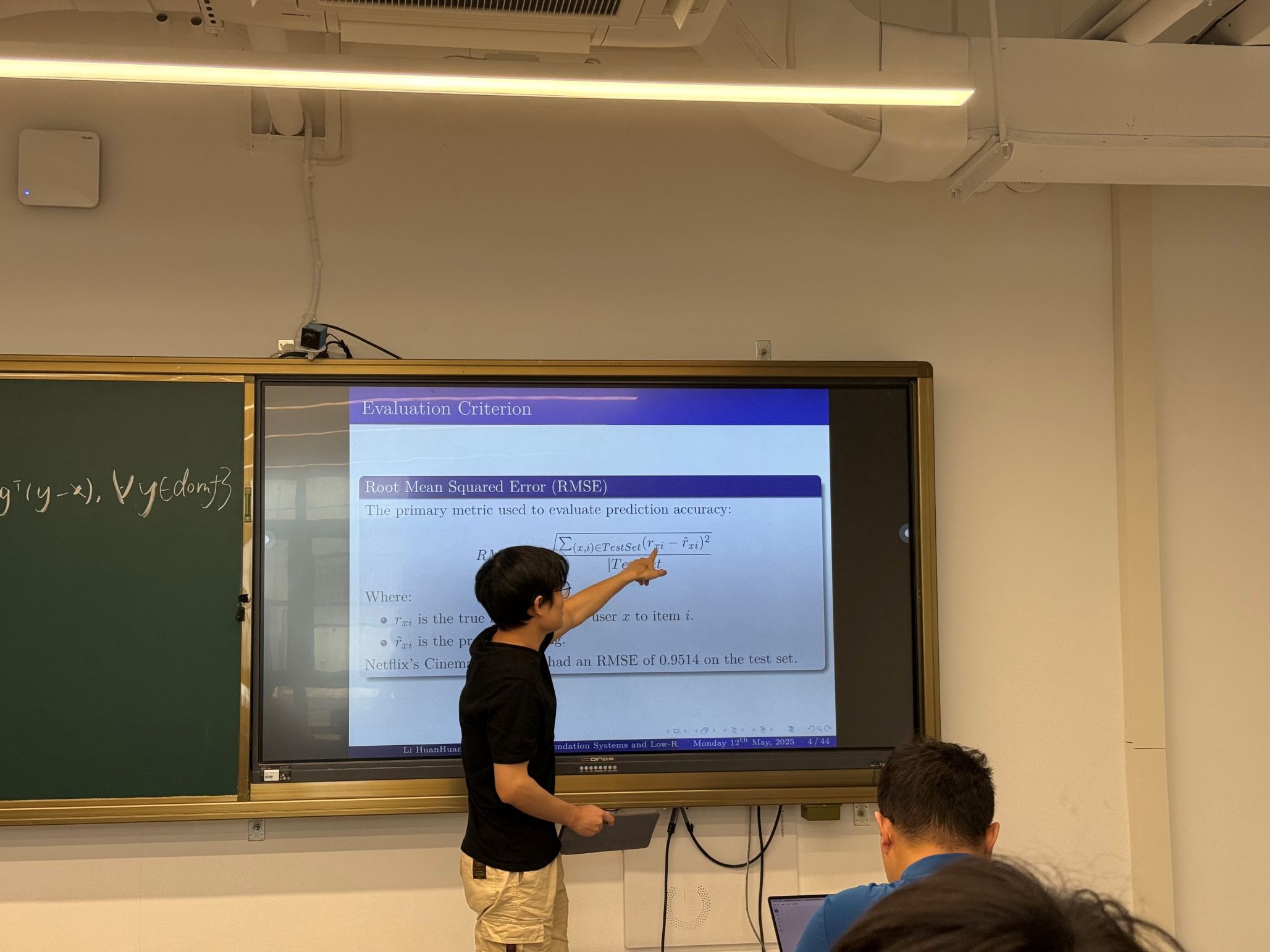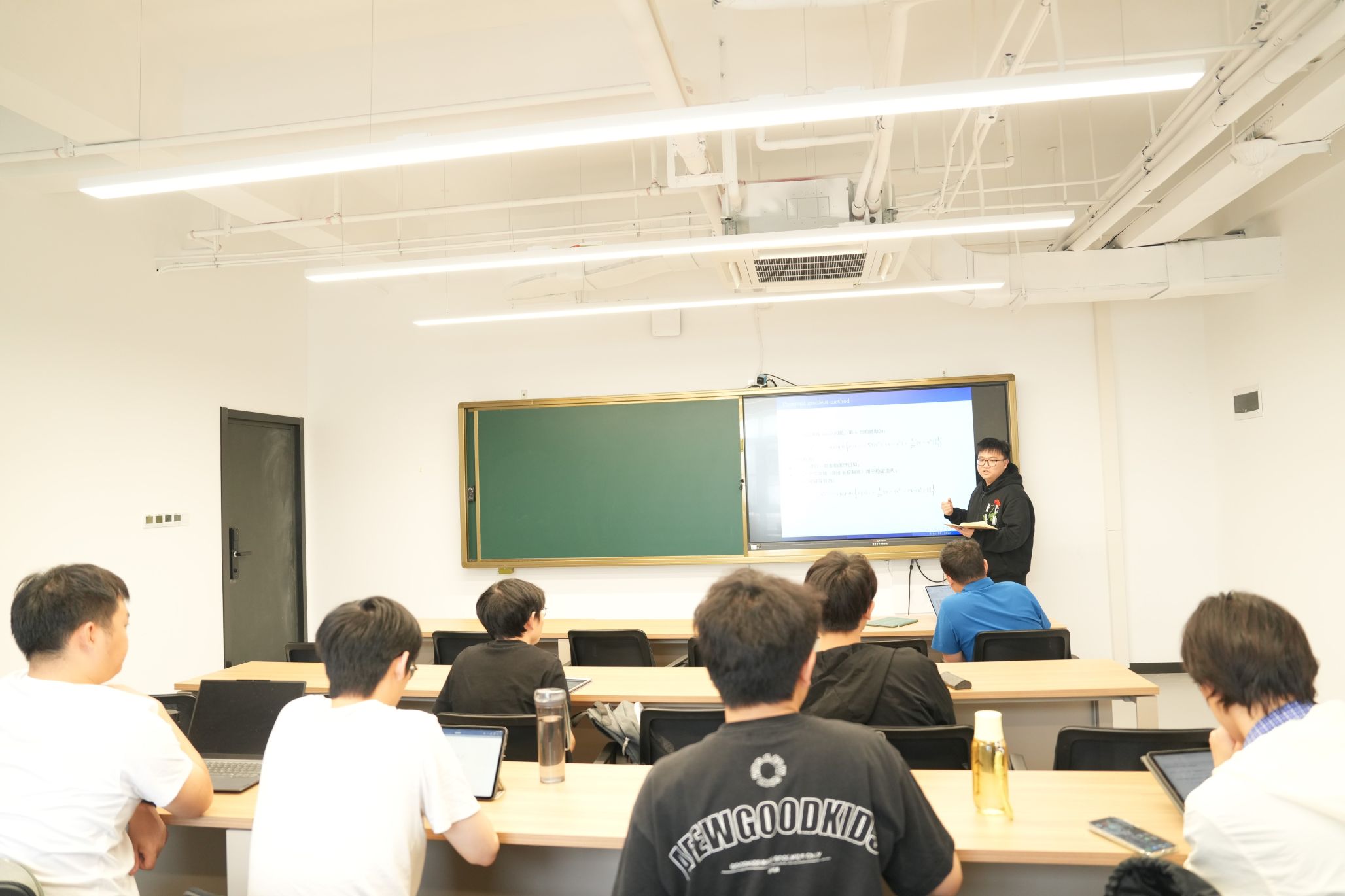Multiscale modeling and optimization computing, as a leading and highly challenging topic in modern science and engineering, focuses on how to construct models that span different spatial, temporal, and even physical scales, and on that basis, achieve in-depth understanding and performance optimization of complex system behaviors. This field plays an important role in uncovering emergent behaviors in whole systems and predicting their evolutionary trends.
As undergraduates in the 2021 Mathematics Fundamental Training Program, we had the privilege of participating in Professor Dai Shuyang’s seminar on “Multiscale Modeling and Computation.” The seminar emphasized the organic integration of theory and practice, encouraging students to apply abstract mathematical theories to concrete research problems and to engage in deep discussions and exchanges. Over the course of more than three months, the participants not only systematically mastered the fundamental theories and core methods of multiscale analysis, computation, and optimization, but also significantly improved their research literacy and capacity for innovation through practical exploration. Professor Dai carefully designed the seminar content to balance theoretical depth with methodological breadth, systematically outlining key analytical methods and classical algorithms in the field of multiscale computation.

In the first seminar, Peng Kerui, a 2024 master’s student in Computational Mathematics, conducted an in-depth review of classical simplex theory in the context of large-scale data and systematically analyzed the algorithmic steps and characteristics of both the primal and dual simplex methods. He also scrutinized issues such as degeneracy and initialization commonly encountered in practical computations. In addition, Peng offered a detailed analysis of the theoretical advantages and computational efficiency of interior-point methods, elaborating on the practical value and convergence guarantees of primal-dual algorithms with central paths. These discussions not only deepened students’ understanding of the essence of linear programming theory but also sparked strong interest in optimization algorithms.
In the second seminar, Du Xiang, an undergraduate student from the 2021 Mathematics Fundamental Training Program, applied the primal-dual operator splitting algorithm to solve the Wasserstein gradient flow problem. He explained in detail how, by introducing the Wasserstein distance, one can identify and extract the gradient flow structure of certain partial differential equations within the Wasserstein space. Moreover, he skillfully employed the JKO scheme and the Benamou–Brenier dynamic formulation to transform the solution of the PDE into a series of optimization problems. Du’s exploratory work fully demonstrated the immense potential of profound mathematical theory in solving real-world problems and provided valuable insights for his peers.
In the third seminar, Gao Yuyang, a direct Ph.D. student (admitted in 2022) in Computational Mathematics, focused on the highly challenging and cutting-edge problem of proton therapy treatment plan optimization. He systematically introduced the construction and variations of various mathematical models involved in this field and highlighted its key challenges. Gao’s excellent presentation not only showed undergraduates the crucial role that sophisticated mathematical modeling plays in addressing practical medical problems but also inspired strong interest in interdisciplinary research.

Through participation in this seminar series, students developed a deeper appreciation for the importance of foundational theories such as multiscale analysis, optimization theory, and numerical solutions of differential equations. Under Professor Dai’s careful guidance, they progressed step by step in acquiring new knowledge and actively focused on research and applications in related fields. The seminar served not only as a platform for learning but also as a place for sparking innovative thinking and enhancing research capability. Within this vibrant academic atmosphere, students inspired one another and advanced together.